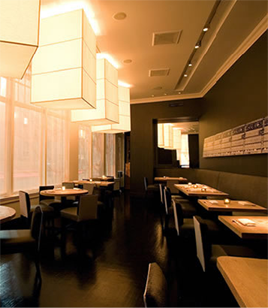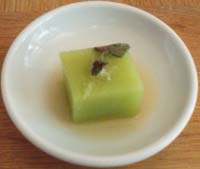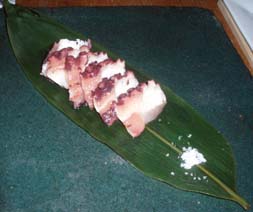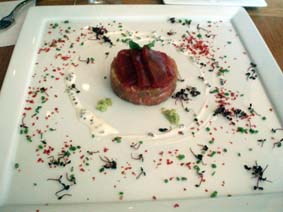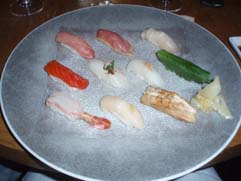Matsugen
 Wednesday, May 20, 2009 at 04:23PM
Wednesday, May 20, 2009 at 04:23PM  Note: Matsugen closed in March 2011, after failing consistently to draw crowds.
Note: Matsugen closed in March 2011, after failing consistently to draw crowds.
*
Jean-Georges Vongerichten really, really, really wants you to visit Matsugen.
The other day, Grub Street ran the feature where it asks a restauranteur to chronicle his eating habits for a week. Among other things, we learned that Jean-Georges Vongerichten always eats dinner at Matsugen on Sundays, but apparently he eats there Tuesdays as well. He does not mention JoJo, Vong, Mercer Kitchen, or Spice Market.
Vongerichten spends most of his time at the flagship, but he’s supposed to be there; and he visited Perry St, where he was testing new recipes. But Matsugen is apparently the only restaurant in his empire where he dines regularly for pleasure. Maybe it’s because when we arrived at 7:00 p.m. on a Friday evening, the staff outnumbered the customers. To be fair, it got a bit busier later on, but it never filled up. On a weekend, that cannot be an encouraging sign.
We’ve written about Matsugen twice before (1, 2), so we’ll go easy on the background. There’s some intermittently compelling food here, and a good meal need not break the bank. Four appetizers (two more than we needed), a bowl of soba apiece and an inexpensive bottle of sake were just $125 before tax and tip. You can do even better if you have the multi-course $35 prix fixe, but we didn’t go that route.


Barachirashi, or raw fish over warm sushi rice ($12; above left) was the highlight of the evening—looking as good as it tasted. I was less impressed with Toro Tataki ($21; above right). When you’re serving premium tuna, it shouldn’t be drowning in gravy.


Meatballs ($7; above left) were a bit dry on the outside, but luscious on the inside. Tempura vegetables ($12; above right) were forgettable.

The Matsugen Special Soba ($16; above) comes with a blizzard of ingredients: scallion, bonito, yam, sesame, okra, wasabi, cucumber, myoga, shiso, egg, nori. It would be refreshing even without the thin, delicate soba noodles.
Ordering at Matsugen is an exercise in frustration, as you never have a sense of how big the plates are, and the servers provide very little guidance—that’s useful, at any rate. I’ve loved the soba dishes every time, but the appetizers aren’t as consistently enjoyable. The space is sterile and charmless, and for the price I think there are more comfortable destinations where the food is equally or even more compelling.
Matsugen (241 Church Street between Leonard & Worth Streets, TriBeCa)
Food: **
Service: *½
Ambiance: Sterile, charmless
Overall: *½











































